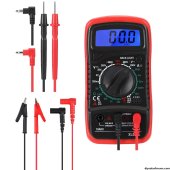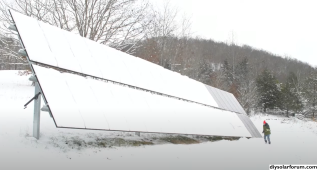m0onspell
New Member
- Joined
- Oct 18, 2022
- Messages
- 139
From what I am seeing most of the people reagard more perpendicular angle like 60 degrees as the most optimal tilt for the winter. The reason being is that the sun is low during the winter.
So they're orienting towards the sun. Which should make sense, right? But the thing is that in my area most of the time there is no sun in the winter. Cloudy days, sky is like a concrete, I am sure you know what I mean. There may be a few sunny days in a month.
So I also found that quite a few folks are setting their panels to zero degree angle and even showing some figures claiming that such an angle is the most optimal for cloudy winter days. The reason is because panels are able to absorb more of the ambient light.
Which makes sense to me. It is worth mentioning that my array will be ground mounted. I want to optimize for the winter exclusively and I don't really care about the effectiveness of my panels during rest of the year. So during cloudy days when the total output is very low, those additional 30% would really matter to me. On rare occasions of a sunny day I think I'll still be able to charge my batteries, even though it may be slower than if my panels were set to a perpendicular angle.
But then there's another factor: snow. If you set to zero degrees, you'll probably have to clean your panels all the time, because the snow just won't come off. Perpendicular angle has a clear advantage here.
So that leads me to a conclusion that something like 10-20 degrees would be the most optimal angle for the scenario I described. Since the snow should be able to come off by itself easier than if it is 0 degree (although tbh I am not sure how much tilt is minimum required for the snow to come off). And the angle is pretty flat, so the panels should be able to absorb more of the ambient light.
Would appreciate your thoughts.
So they're orienting towards the sun. Which should make sense, right? But the thing is that in my area most of the time there is no sun in the winter. Cloudy days, sky is like a concrete, I am sure you know what I mean. There may be a few sunny days in a month.
So I also found that quite a few folks are setting their panels to zero degree angle and even showing some figures claiming that such an angle is the most optimal for cloudy winter days. The reason is because panels are able to absorb more of the ambient light.
Which makes sense to me. It is worth mentioning that my array will be ground mounted. I want to optimize for the winter exclusively and I don't really care about the effectiveness of my panels during rest of the year. So during cloudy days when the total output is very low, those additional 30% would really matter to me. On rare occasions of a sunny day I think I'll still be able to charge my batteries, even though it may be slower than if my panels were set to a perpendicular angle.
But then there's another factor: snow. If you set to zero degrees, you'll probably have to clean your panels all the time, because the snow just won't come off. Perpendicular angle has a clear advantage here.
So that leads me to a conclusion that something like 10-20 degrees would be the most optimal angle for the scenario I described. Since the snow should be able to come off by itself easier than if it is 0 degree (although tbh I am not sure how much tilt is minimum required for the snow to come off). And the angle is pretty flat, so the panels should be able to absorb more of the ambient light.
Would appreciate your thoughts.





